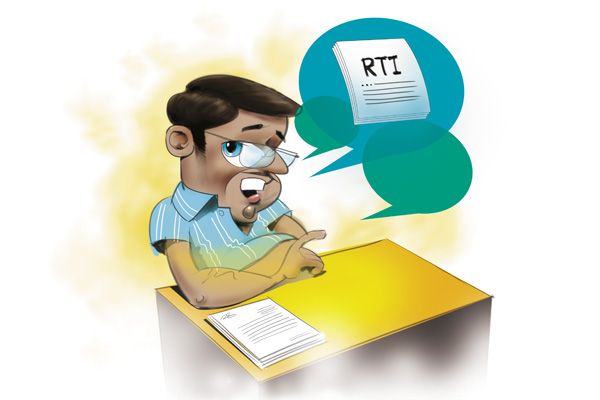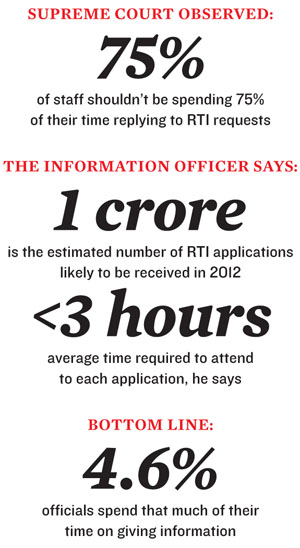Dear Comrades,
RTI Queries Don't Affect Govt. Work
The time spent by government officials replying to RTI is so little that it cannot be a pretext for them to shirk that task.
 |
In
August 2011, the Supreme Court made an observation which had some
unintended consequences on the Right to Information (RTI) process. The
judgement by Justice R.V. Raveendran is turning out to be a seemingly
legitimate excuse for government officials to restrict information.
Aditya Bandopadhyay went to court when the Central Board of Secondary Education declined to provide his examination answer sheets under the RTI Act. While the court allowed access to answer sheets, it also observed that the cherished right to information should not affect administrative efficiency.
Aditya Bandopadhyay went to court when the Central Board of Secondary Education declined to provide his examination answer sheets under the RTI Act. While the court allowed access to answer sheets, it also observed that the cherished right to information should not affect administrative efficiency.
In
his judgement, Justice R.V. Raveendran said: “The nation does not want a
scenario where 75 percent of the staff of public authorities spends 75
percent of their time in collecting and furnishing information to
applicants instead of discharging their regular duties. The threat of
penalties under the RTI Act and the pressure of the authorities under
the RTI Act should not lead to employees of public authorities
prioritising information furnishing at the cost of their normal and
regular duties.” Government officials are now using this excuse with
increasing frequency saying that even the court agrees. Central
Information Commissioner Shailesh Gandhi says 75 percent government
staff spending 75 percent of their time on giving information would mean
56 percent (0.75 X 0.75) of their total time spent only on replying to
RTI queries.

Gandhi
says that at the most optimistic estimate not more than one crore RTI
applications are likely to be received by all public authorities across
the country in 2012. The average time to attend to each would be less
than three hours. That means no more than three crore hours spent by all
officials.
Assuming
that an average government employee works for just six hours a day for
200 days a year, it would mean he would work for a total of 1,200 hours
in a year. That means 25,000 (3 crore divided by 1,200) employees would
be required full time. The Centre and all state governments have about
1.2 crore employees. So, the total time spent by government employees on
replying to RTI queries would be 0.208 percent (25,000 divided by
12,000,000).
In
other words, no more than 4.6 percent officials are spending 4.6
percent of their time on giving information. This is based on
conservative assumptions. Surely, government officials work for more
than six hours a day! Doesn’t look like they have much space to hide.
AIPEU P3 CHQ

